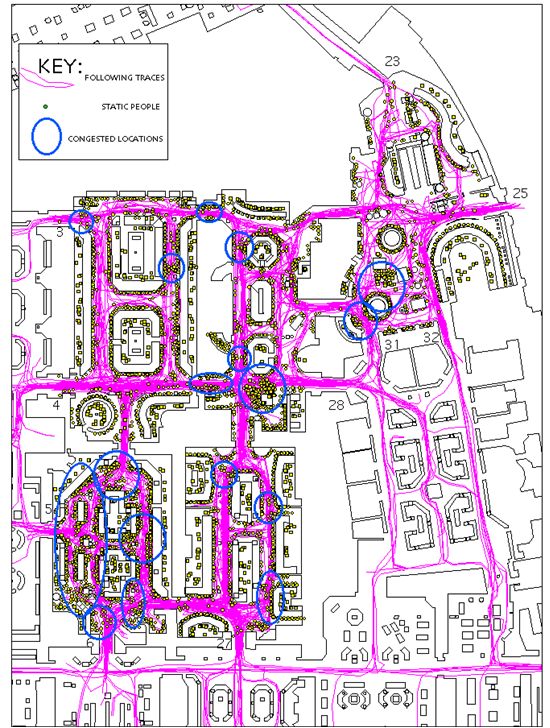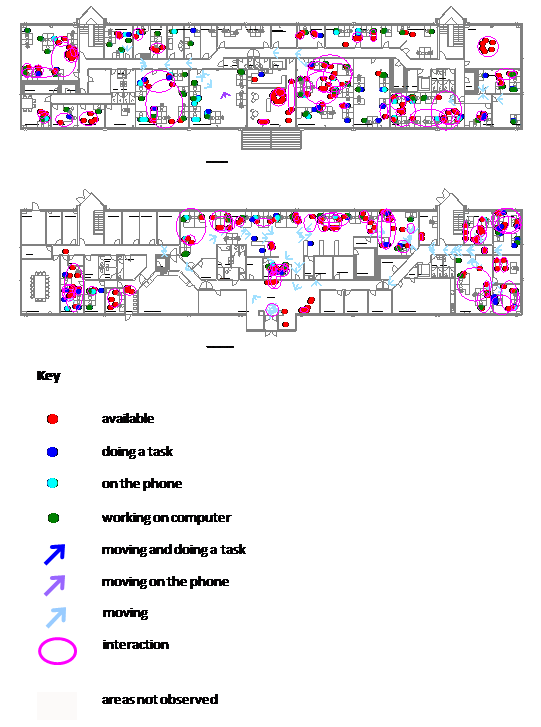How is building function described and measured?
The following demonstrates several methods of observing and measuring the ways buildings are used.
1. Pedestrian Traces (A)
Pedestrian tracing is a technique of observing pedestrian routes dispersing from a specific location. For example a train station.
a. Study area
Have a plan of a building, with the specific location from which we trace the routes people take as we follow them.
b. Following
Record the routes of movement, particularly the first ten minutes of an individual’s trace.
c. Digitalisation
Digitise the recorded movement routes to demonstrate the followed movement patterns.
2. Static snapshot (B)
Static snapshots is a technique of observing pedestrian stationary activity.
a. Study area
Select a large scale plan of a building under observation and divide it into a series of convex spaces with which pedestrian activity snapshot can be undertaken.
b. Activity category
Categorise the activities into sitting, standing, walking and so on.
c. Snapshots
Walk from space to space taking a mental snapshot of the activities taking place at a precise moment. The snapshot map reveals the pattern of sitting, standing, interactions and directions of movement.
3. Other methods
The other methods include ethnographic observation and analysis, interview, facility survey and analysis. For details, please refer to the space syntax observation manual.







